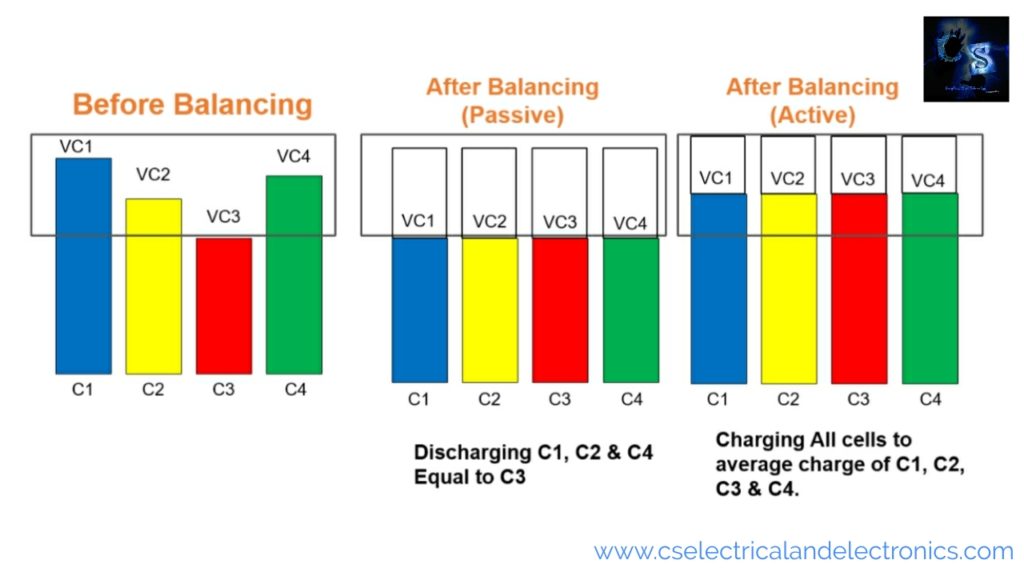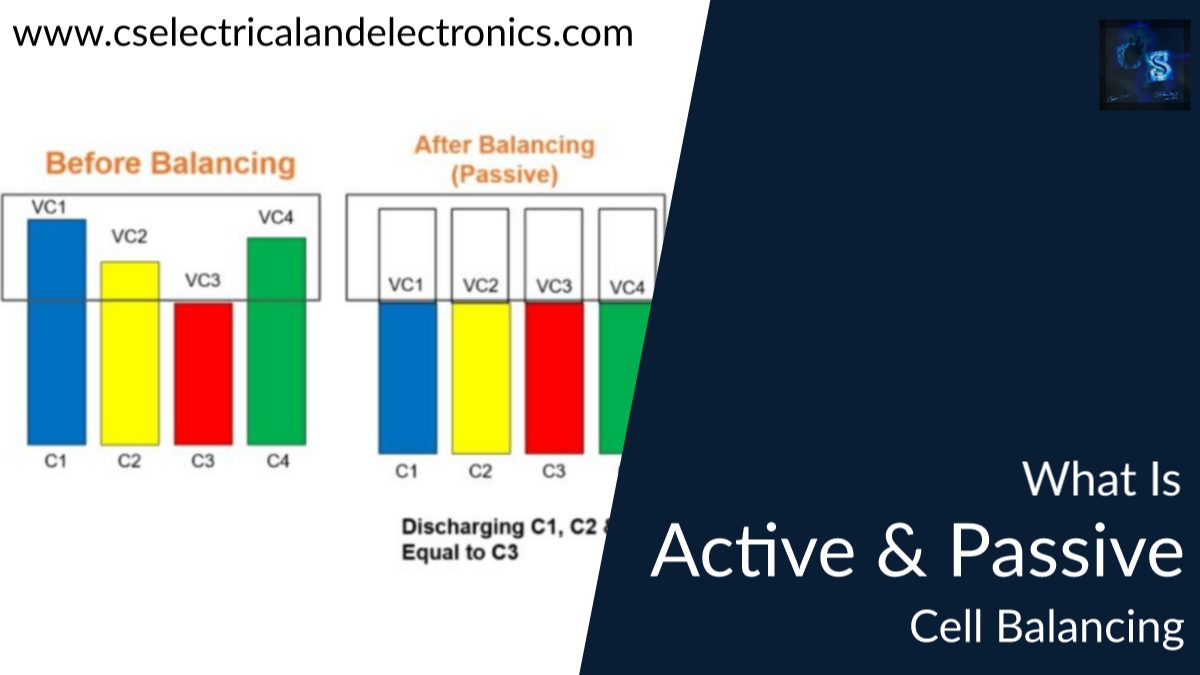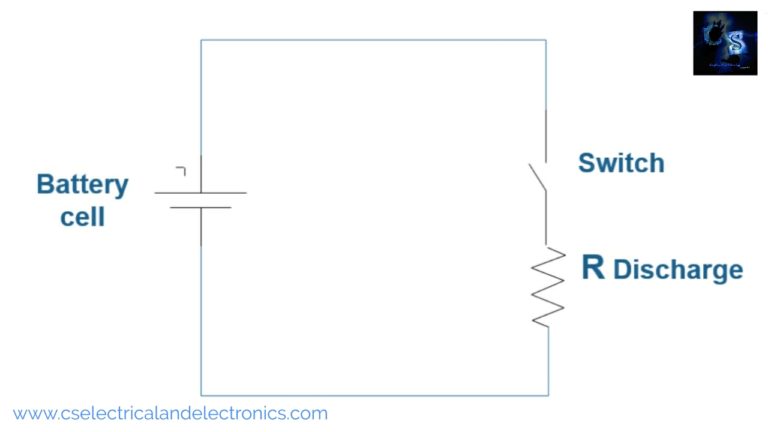What Is Active And Passive Cell Balancing, Why Cell Balancing Is Required
Hello guys, welcome back to my blog. In this article, I will discuss what is active cell balancing, what is passive cell balancing, why cell balancing is required in lithium-ion batteries, etc. Each and everything I will try to explain in a simple way.
If you have any electrical, electronics, and computer science doubts, then ask questions. You can also catch me on Instagram – CS Electrical & Electronics.
Also, read:
- Top 10 Electrical Wire Manufacturing Companies In The World
- Top Electric Vehicle Interview Questions With Answers Must Know
- What Is Wireless BMS, Battery Management System, Benefits, Working
What Is Active And Passive Cell Balancing
Cell balancing is a very important thing when it comes to lithium-ion batteries. Nowadays, lithium-ion batteries are used in electric vehicles. Celling balancing means making the state of charge or voltage of all the lithium-ion cells equal by charging or discharging each cell based on the topology you are implementing.
The cell balancing is done by BMS (Battery Management System), it is a microcontroller used to maintain and manage the lithium-ion batteries. The battery management system is required only for lithium-ion batteries. The purpose of the battery management system is celling balancing, protecting the battery from short circuits, measuring the state of charge, state of health, state of power, state of energy, etc.
Proper cell balancing is required otherwise the life span of lithium-ion batteries decreases. Cell balancing is classified into two types, such as active cell balancing and passive cell balancing. Well, let’s see what is active cell balancing and what is passive cell balancing.
What causes cell unbalancing?
The cell becomes unbalanced due to internal resistance and temperature. As the life span of the cell increases the internal resistance will also vary which causes the cell to unbalance. The cell may also become unbalanced due to the surrounding temperature and improper connection.
Active Cell Balancing
In an active cell balancing, the voltage across each cell is made equal without wasting any energy through a resistor. Suppose consider there are two cells of terminal voltage 4v and 6v. The 4v cell will be charged (gets energy from cell 2) and the 6v cell will be discharged through some methods, later the voltage across each cell will become 5v.
Let’s see one more example, Person ‘A’ has 20 liters of water in the tank, Person ‘B’ has 10 liters, and Person ‘C’ has 30 liters, now to make equal water in all the three tanks, the person ‘C’ share water of 10 liters to Person ‘B’, now the water in the tanks becomes equal. This is what the active cell balancing does.
The active cell balancing makes the voltage of each cell equal without wasting any energy.
Passive Cell Balancing
In a passive cell balancing, the voltage across each cell is made equal by wasting the energy through a resistor. Suppose, consider there are two cells having the voltage of cell one 4 volts and the voltage of the second cell 5 volts. The 1v of the 2nd cell is dropped through the resistor to make the voltages of each cell equal. Or else if the state of charge of cell 01 is 30% and the state of charge of cell 02 is 60%, then 30% of the state of charge in cell 02 is dissipated through a resistor, to make the cell’s state of charge equal.
Well, let’s see one more example, Person ‘A’ has 40 liters of water in a tank, and Person ‘B’ has 50 liters of water in a tank, to make water equal in both tanks, the person ‘B’ waste 10-liter of water to make 40-liter. This is what passive cell balancing does.
Why Cell Balancing Is Required

Cell balancing is required to increase the lifespan of the battery, to make the motor run efficiently, to increase the efficiency of lithium-ion batteries, etc. Suppose if the SoC of cells is different and you charge those cells, then some cells will be overcharged which will affect the cell internally and reduces the lifespan of cells.
I hope this article “What Is Active And Passive Cell Balancing” may help you all a lot. Thank you for reading.
Also read:
- 10 Tips To Maintain Battery For Long Life, Battery Maintainance
- 10 Tips To Save Electricity Bills, Save Money By Saving Electricity
- 100 (AI) Artificial Intelligence Applications In The Automotive Industry
- 100 + Electrical Engineering Projects For Students, Engineers
- 1000+ Automotive Interview Questions With Answers
- 1000+ Control System Quiz, Top MCQ On Control System
- 1000+ Electrical Machines Quiz, Top MCQs On Electrical Machines
- 1000+ MATLAB Simulink Projects For MTech, Engineering Students


